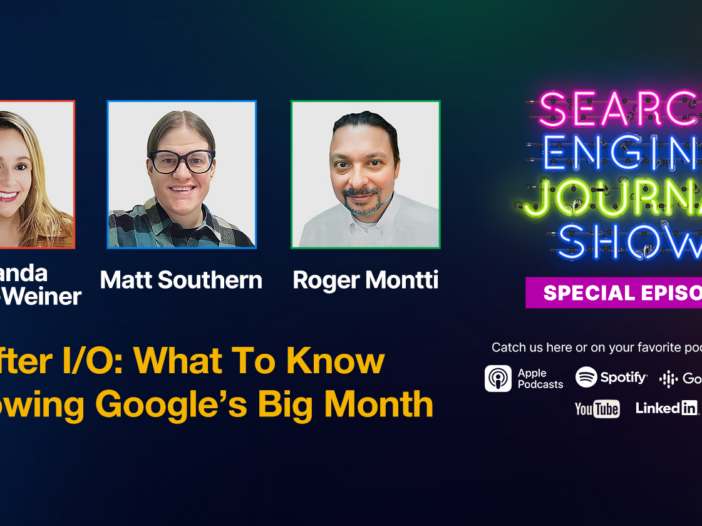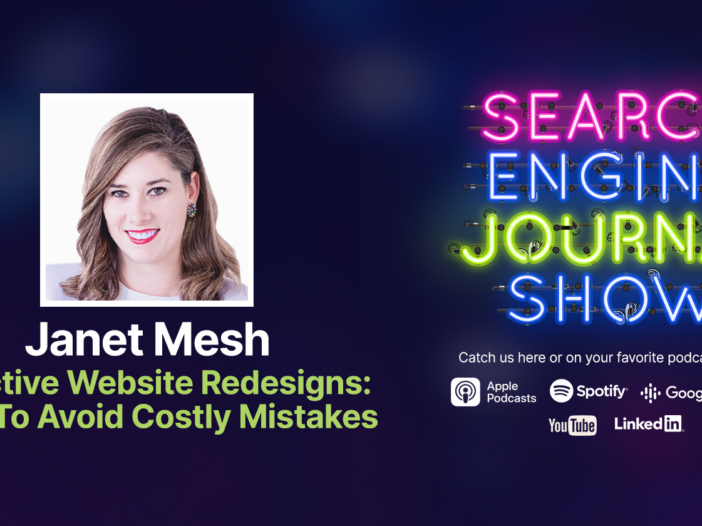We use cookies to analyze user behavior in order to constantly improve the website for you. Learn more.
Wilmington, Delaware and Wan Chai, Hong Kong–(Newsfile Corp. – October 30, 2024) – QGP, a link-building provider committed to helping clients improve their online presence, launches a new homepage backlinks service to empower businesses and brands to gain visibility and strengthen the performance of their websites.
Given that the homepage’s authority greatly influences website ranking, homepage backlinks are one of the key factors in improving a site’s overall visibility in search engine results (SERPs).
With these new services, QGP’s platform makes it easy for businesses to strengthen their online presence and climb search rankings, driving real growth through smarter, more powerful homepage backlinks.
Businesses using the new services will have access to over 5,000 sites through the QGP 3.0 system and can potentially secure high-value homepage links without the hassle of building PBNs, managing footprints, or constantly updating content.
The service also offers fast, easy delivery with links going live within a week, and clients can cancel anytime.
Businesses can explore the new homepage backlinks service here.
About QGP
QGP is a leading link-building and SEO strategy consulting provider specializing in white hat link-building through guest posts, niche edicts, and homepage link strategies. With the expertise to build effective, healthy SEO campaigns, its platform has become the go-to link-building provider for various highly successful SEO training programs.
Media Contact:
Kosta Hristov, Founder & CEO of QGP
kosta@qgp.com
+852 3001 5702
https://www.qgp.com/
To view the source version of this press release, please visit https://www.newsfilecorp.com/release/228182
SOURCE: DesignRush
Analyst, journalist, or company stakeholder? Sign up to receive news releases by email for DesignRush or all companies belonging to the Technology, Electronic Commerce, Publishing/Informational Services industries.
Sign Up
Company Profile
Technology
Electronic Commerce
Publishing/Informational Services
About Us
Newsfile is a customer-first newswire focused on the distribution of press releases and regulatory disclosures to audiences worldwide.
Legal
Terms of Use
Anti-Spam Policy
Privacy Policy
Bill C-18
Copyright 2024 Newsfile Corp. All rights reserved.
Our commitment to delivering the best personal service defines our business and inspires our efforts every day. We’re accessible and responsive to every client we serve, using cutting-edge technology and innovation makes it easier for us to focus on relationship building. The way we see it, a helpful voice on the phone is always welcomed.
In addition to respecting you, Newsfile is respected as an accredited source of business news—making every story we handle become trusted for retail and institutional investment decisions.
Complete the form to the right and a customer service representative will contact you to answer your questions.
After I/O: What To Know Following Google’s Big Month [Podcast] – Search Engine Journal
Join this leadership discussion for proven techniques to build long-term relationships and keep your clients coming back.
Discover the latest trends, tips, and strategies in SEO and PPC marketing. Our curated articles offer in-depth analysis, practical advice, and actionable insights to elevate your digital marketing efforts.
In this guide, industry experts explore the challenges and opportunities presented by the onslaught of AI tools, and provide actionable tips for thriving amid these shifts.
Discover the latest trends, tips, and strategies in SEO and PPC marketing. Our curated articles offer in-depth analysis, practical advice, and actionable insights to elevate your digital marketing efforts.
Join three of Reddit’s top executives in this exclusive AMA (Ask Me Anything) to discover how you can tap into Reddit’s unique platform to drive brand growth.
Join this leadership discussion for proven techniques to build long-term relationships and keep your clients coming back.
Podcast: Download
Subscribe: Apple Podcast Google Podcasts Spotify
On this episode of the SEJ Show, we dive headfirst into the aftermath of Google’s momentous May, from I/O to Marketing Live.
Join SEJ Editor-in-Chief Amanda Zantal-Wiener in conversation with industry experts Roger Montti and Matt Southern as we dissect the key takeaways and groundbreaking announcements from Google’s annual events.
From an abundance of AI announcements to product updates, tune in to learn how to leverage and apply these developments to stay ahead of the curve.
Google announced a lot of things, but they’re not shipping anything yet, so it’s not like they’re flooding the market with all this new stuff that we have to try. There are a lot of announcements, and I find that we have a lot of time to digest them before we can get our hands on them and use them. –Matt Southern, 2:17
The big takeaway that I got from I/O and the way Google is looking to change the search experience, also with GML yesterday changing the advertiser experience is making everything conversational, which by the way, I feel like we’ve seen this before. Conversational marketing with chatbots etc., was a really big deal. There’s a big emphasis on a conversational approach to all these things. –Amanda Zantal-Wiener, 32:22
So it seems both Open AI and Google are afraid of the democratization of AI. Right now, people are building a chatbot for 500 bucks or less, so the technology is out there. People are building their own things, like Jasper AI is working with Cerebras, which provides AI infrastructure, and a lot of people think Jasper AI is just taking a chat GPT feed and modifying it. No, they built their own large language models using the Cerebras infrastructure, and it’s very unique to them and very specific–what’s called domain-specific. That’s going to pose a problem for them, and they want to keep a light on it, in my opinion, but that’s why you’re seeing the first strike from Google and open AI about the legislation because they want to control what the laws are. –Roger Monttii, 7:17
[00:00] – About Matt & Roger
[02:04] – Are things slowing down this summer?
[05:50] – The talk about the L-word: Legislation.
[12:33] – The white paper on Google’s ethics and AI.
[17:32] – Initial thoughts on Google’s Search Generative Experience (SGE)
[22:03] – About Section 230.
[32:22] – How do you optimize for the new search experience?
[47:15] – How will the new search experience impact accessibility & KPIs?
[52:37] – What’s the motivation for companies?
[58:26] – What’s on the horizon?
Resources mentioned:
Google I/O: https://io.google/2023/
230 should be amended to account for recommender algorithms which is a relatively new thing that didn’t exist. Section 230 was originally formulated to regulate, give a fair forum, and allow free speech. Section 230 is about allowing free speech. But let’s face it: When it comes to people advocating harm, it might seem controversial, but there should be limits on free speech because the right to free speech is only the right to have to be able to say what you want and not have government and put laws into it. Free speech is when I walk into your house or Matt’s house, or anybody who’s watching. I can’t go in there and say whatever the hell I want. You have the right to kick me out. So when you go to a website, whether it’s YouTube, Twitter, or some random forum, if you don’t can abide by the terms of service that restrict what kind of speech is allowed there, they have the right to kick you out. –Roger Monttii, 27:22
As far as the summer in search, I think that it might slow down, but Google has a history of pushing things without announcing them over to summertime, although there are some updates too. But there’s been a history of Google pushing important changes related to how search works during the summer and then announcing it in the fall. –Roger Monttii, 4:13
I was watching the hearing with Sam Altman, and it seemed a little too friendly compared to previous hearings. It’s unusual for a company like that to just welcome regulation, almost like they’re asking, “please regulate us.” –Matt Southern, 10:09
For more content like this, subscribe to our YouTube channel: https://www.youtube.com/user/searchenginejournal
Connect With Roger Montti:
Roger Montti is a seasoned search marketer boasting over 20 years of experience in the field. He has built a solid reputation for expertise and effectiveness by offering site audits, phone consultations, and content and link strategy assistance.
In addition to being a Head Judge for the 2020 and 2021 U.S. Search Awards, Roger is also a publisher of award-winning websites, showcasing his multifaceted talents within the industry.
As a prominent figure in search marketing, Roger has shared his insights at various conferences, including SES, SMX East, SMX West, SMX Advanced Seattle, Affiliate Summit NYC, Affiliate Summit West, and multiple PubCon events. In addition, his writing covers various topics, such as WordPress, Facebook, Google, SEO, and search marketing, further establishing him as a thought leader.
Connect with Roger on LinkedIn: https://www.linkedin.com/in/martinibuster/
Follow him on Twitter: https://twitter.com/martinibuster
Connect With Matt Southern:
Matt G. Southern, a highly respected Senior News Writer, has been integral to the Search Engine Journal team since 2013. With a bachelor’s degree in communications, he excels at distilling complex subjects into clear, engaging content.
In addition to writing, Matt is responsible for overseeing strategy development within SEJ’s news department, ensuring that the organization remains at the forefront of the digital marketing and search engine optimization landscape.
As a trusted source of information, Matt’s work at SEJ combines accuracy, quality, and relevance. His dedication to excellence in reporting and commitment to helping others better understand search engines and digital marketing make him an indispensable asset to SEJ and the broader industry.
Connect with Matt on LinkedIn: https://www.linkedin.com/in/mattgsouthern/
Follow him on Twitter: https://twitter.com/MattGSouthern
Connect with Amanda Zantal-Wiener, Editor-in-Chief at Search Engine Journal:
Follow her on Twitter: https://twitter.com/Amanda_ZW
Connect with her on LinkedIn: https://www.linkedin.com/in/amandazantalwiener/
Amanda is a writer, editor, marketer, and “Golden Girls” superfan. Joining SEJ from HubSpot, her byline has appeared in Thrillist, …
Conquer your day with daily search marketing news.
Join Our Newsletter.
Get your daily dose of search know-how.
In a world ruled by algorithms, SEJ brings timely, relevant information for SEOs, marketers, and entrepreneurs to optimize and grow their businesses — and careers.
Copyright © 2024 Search Engine Journal. All rights reserved. Published by Alpha Brand Media.
Effective Website Redesigns: How To Avoid Costly Mistakes [Podcast] – Search Engine Journal
Join this leadership discussion for proven techniques to build long-term relationships and keep your clients coming back.
Discover the latest trends, tips, and strategies in SEO and PPC marketing. Our curated articles offer in-depth analysis, practical advice, and actionable insights to elevate your digital marketing efforts.
In this guide, industry experts explore the challenges and opportunities presented by the onslaught of AI tools, and provide actionable tips for thriving amid these shifts.
Discover the latest trends, tips, and strategies in SEO and PPC marketing. Our curated articles offer in-depth analysis, practical advice, and actionable insights to elevate your digital marketing efforts.
Join three of Reddit’s top executives in this exclusive AMA (Ask Me Anything) to discover how you can tap into Reddit’s unique platform to drive brand growth.
Join this leadership discussion for proven techniques to build long-term relationships and keep your clients coming back.
Podcast: Download
Subscribe: Apple Podcast Google Podcasts Spotify
Website redesigns are a necessary component for marketers. But with so many elements going into an effective redesign, do you know what to focus on to develop a solid plan from the start?
Join us and hear from Janet Mesh, CEO and co-founder of Aimtal, as she and Loren Baker, our founder and host, break down the ways to effectively launch a website redesign using Webflow and HubSpot, and the factors you need to focus on when redesigning. You’ll get tips on honing in on your site’s infrastructure using Janet’s “do no harm” strategy, to ensure that you have a clear infrastructure plan from the beginning.
If you’re looking to make your next redesign efficient and effective, you won’t want to miss these tips.
Resources:
Website Strategy Worksheet
Connect with Janet Mesh, CEO and Co-Founder of Aimtal:
Janet Mesh is the CEO + Co-Founder of Aimtal, a fully remote integrated marketing & consulting agency for B2B tech companies like Cisco, Atlassian, Trello, and Prisma Cloud. She is a remote work advocate who, in the past 5 years, has built and run a team of marketers located in 6 time zones all over the world.
Janet has doubled the size and revenue of her agency year-over-year since its inception in 2018 and Aimtal won the Sprout Social ‘Always Be Growing’ award in 2022 in recognition of this growth. Her passion for integrated marketing with an agile approach is the key to her success, and has led to over a million dollars in sales for her clients in the last year.
Outside of work, you can find Janet trying new restaurants around the world, reading historical fiction novels, and hosting happy hours at home for family & friends.
Instagram: https://www.instagram.com/aimtal_co/
Facebook: https://www.facebook.com/aimtalco/
YouTube: https://www.youtube.com/@aimtal/
Twitter: https://twitter.com/aimtal_co
LinkedIn: https://www.linkedin.com/company/aimtal/
Connect with Loren Baker, Founder of Search Engine Journal:
Follow him on Twitter: https://www.twitter.com/lorenbaker
Connect with him on LinkedIn: https://www.linkedin.com/in/lorenbaker
Loren Baker is the Founder of SEJ, an Advisor at Alpha Brand Media and runs Foundation Digital, a digital marketing …
Conquer your day with daily search marketing news.
Join Our Newsletter.
Get your daily dose of search know-how.
In a world ruled by algorithms, SEJ brings timely, relevant information for SEOs, marketers, and entrepreneurs to optimize and grow their businesses — and careers.
Copyright © 2024 Search Engine Journal. All rights reserved. Published by Alpha Brand Media.
Google launches perspectives filter in mobile search results – Search Engine Land
sel logo
Search Engine Land » SEO »
Chat with SearchBot
SearchBot:
Google has begun the rollout of the new perspectives filter in the mobile search results this weekend. This feature was announced at Google I/O and we have seen previews and tests from Google over the past months related to this feature and now it is live.
What it looks like. Here is a screenshot of the feature, you can see it by searching on mobile and sliding the search bar filters until you see a “perspectives” option. Click on the “perspectives” option to load those results:
More about perspectives. Searchers can filter their search results to show results to see videos, blogs and forums. These results aim to show people a more “lived experience” to their search queries, Liz Reid, VP of Search at Google, told Search Engine Land at Google I/O. These searchers are able to see answers from people who are sharing their own personal perspectives and these answers are provided in a user interface that is more friendly and consumable to the younger searcher.
When you tap on the perspectives filter, you will see more long and short-form videos, images, and written posts that people have shared on discussion boards, Q&A sites, and social media platforms, Google explained.
We saw Google testing perspectives early on, but those two examples are different from what we covered here. I spotted this in early May.
Hat tip to Kumarpal Shah for spotting this on Saturday.
Why we care. Here is a new way to see content within forums, videos, blogs and other formats where people are giving their view and perspectives on a specific topic.
The filter is deep inside the search filter bar, so it is not clear how many people will use it but it is rolling out now and some of you may be able to play with it to see if your content shows up for some queries.
Related stories
New on Search Engine Land
About the author
Related topics
Get the newsletter search marketers rely on.
See terms.
Learn actionable search marketing tactics that can help you drive more traffic, leads, and revenue.
Online Nov. 13-14: SMX Next
Available on-demand: SMX Advanced
Available on-demand: SMX Master Classes
Discover time-saving technologies and actionable tactics that can help you overcome crucial marketing challenges.
April 15-17, 2020: San Jose
Get More Out of Your Webinars: Strategies for 24/7 Engagement
How Content is Critical to a Winning Ecommerce Strategy
ABM and AI for Marketers: Priority Use Cases for 2025
Enterprise SEO Platforms: A Marketer’s Guide
Email Marketing Platforms: A Marketer’s Guide
Customer Data Platforms: A Marketer’s Guide
Elevate Your Executive Brand with Proven Social Media Strategies
Meet your new AI-powered marketing assistant!
Get the newsletter search marketers rely on.
Topics
Our events
About
Follow us
© 2024 Search Engine Land is a Trademark of Semrush Inc.
Third Door Media, Inc. is a publisher and marketing solutions provider incorporated in Delaware, USA, with an address 88 Schoolhouse Road, P.O. Box 3103, Edgartown, MA 02539. Third Door Media operates business-to-business media properties and produces events, including SMX. It is the publisher of Search Engine Land, the leading digital publication covering the latest search engine optimization (SEO) and pay-per-click (PPC) marketing news, trends and advice.
Generative AI – Using Tools Effectively While Avoiding Common Traps [Podcast] – Search Engine Journal
Join this leadership discussion for proven techniques to build long-term relationships and keep your clients coming back.
Discover the latest trends, tips, and strategies in SEO and PPC marketing. Our curated articles offer in-depth analysis, practical advice, and actionable insights to elevate your digital marketing efforts.
In this guide, industry experts explore the challenges and opportunities presented by the onslaught of AI tools, and provide actionable tips for thriving amid these shifts.
Discover the latest trends, tips, and strategies in SEO and PPC marketing. Our curated articles offer in-depth analysis, practical advice, and actionable insights to elevate your digital marketing efforts.
Join three of Reddit’s top executives in this exclusive AMA (Ask Me Anything) to discover how you can tap into Reddit’s unique platform to drive brand growth.
Join this leadership discussion for proven techniques to build long-term relationships and keep your clients coming back.
Podcast: Download
Subscribe: Apple Podcast Google Podcasts Spotify
ChatGPT and other Large Language Models (LLMs) are seemingly everywhere, and it’s crucial to learn what’s possible with them while acknowledging their flaws. After all, do LLMs have their intelligence? Is ChatGPT ready for “prime time,” or is it merely a toy that can lead to fake and error-laden stories?
President of Pilot Holding, Eric Enge, joined me on the SEJShow to share the truth behind the prevailing myths surrounding the generative AI landscape and how to succeed with the tools instead.
Discover the problems arising from placing too much trust in generative AI. You’ll also find out what is possible and how to use it in your business best while avoiding the common mistakes associated with LLMs.
We must remember that the real problem is that this stuff is trained on the open internet. We have all the world’s information on the web, and that’s great, but we also have all the world’s disinformation on the web and a lot of overtly intended misinformation. –Eric Enge,41:18
Anybody who thinks SEO is going away because of this doesn’t understand SEO. As long as people want to search for and find things, and as long as there are tools to help people search for and find things, there will be SEO, end of story. –Eric Enge, 32:48
We’re not at the point where this will supplant humans in all things. But we are at a point where we’ve developed a really interesting tool that can be used constructively and creatively in many different ways.–Eric Enge, 37:38
[00:00] – Introduction to Eric
[04:21] – AI’s current and future role in search & opportunities
[09:36] – Effects of incorrect information on different Internet users
[14:13] – Error reporting to Google: Best practices
[15:25] – Preparing ecommerce sites for AI-enhanced search
[21:02] – The role of content in local search results
[23:52] – Evaluation of Google’s source selection for search results
[28:23] – Impact of Google’s result integration on clicks and conversions
[31:48] – Importance of brand visibility in search results
[33:14] – Misunderstandings about AI’s influence on search results
[37:40] – Outlook on the future of ai systems
[38:29] – Recent advancements in ai-generated output accuracy
[41:18] – Web disinformation issues and their effect on ai models
[44:22] – Strategies for ai-optimized business content
[46:55] – AI’s potential impact on online content credibility
[48:33] – Importance of experts in enhancing ai-generated content
[50:19] – Google’s approach to evaluating content trustworthiness
[51:49] – Insights on AI’s role in future content generation and SEO
Resources Mentioned:
Pilot Holding: https://www.pilotholding.com/
Right now, we have this massive paradigm shift or the preparation for the shift. We’re definitely in the infant stages. Most of us SEOs have Google SGE running on our browsers. We’re doing queries daily. We’re getting scared or anxious every time we do a query. Now we’re seeing an article appear before the typical organic results. We must keep reminding ourselves that we are beta-testing this at the moment. –Loren Baker, 04:21
The easiest way to get started is to take a page on your site, feed it into the model, give it the search query you want it to rank for, and ask it what changes you need to make to improve your chances of ranking on that or what content gaps you need to fill. –Eric Enge,44:22
Over time, E-A-T (Expertise, Authoritativeness, Trustworthiness) is going to become more important. Google will place a lot of weight on looking for subject matter experts, fact-checking, and a strong staff of experts owning the content. –Eric Enge, 48:22
For more content like this, subscribe to our YouTube channel: https://www.youtube.com/user/searchenginejournal
Connect With Eric Enge:
Eric Enge is an award-winning professional and co-founder of Pilot Holding, specializing in executive consulting for SEO, content marketing, digital marketing, and finance. He founded Stone Temple Consulting, later acquired by Perficient, where he served as General Manager and Principal in the Digital Marketing team.
Eric’s expertise spans digital marketing strategy, SEO, content marketing, paid search, conversion rate optimization, social media, web analytics, and marketing automation. He excels in guiding businesses toward their next stage of growth.
Connect with Eric on LinkedIn: https://www.linkedin.com/in/ericenge/
Follow him on Twitter: https://twitter.com/stonetemple
Connect with Loren Baker, Founder of Search Engine Journal:
Follow him on Twitter: https://www.twitter.com/lorenbaker
Connect with him on LinkedIn: https://www.linkedin.com/in/lorenbaker
Loren Baker is the Founder of SEJ, an Advisor at Alpha Brand Media and runs Foundation Digital, a digital marketing …
Conquer your day with daily search marketing news.
Join Our Newsletter.
Get your daily dose of search know-how.
In a world ruled by algorithms, SEJ brings timely, relevant information for SEOs, marketers, and entrepreneurs to optimize and grow their businesses — and careers.
Copyright © 2024 Search Engine Journal. All rights reserved. Published by Alpha Brand Media.
Google’s “Site:” Operator Won’t Show You Everything That’s Indexed – Search Engine Journal
Join this leadership discussion for proven techniques to build long-term relationships and keep your clients coming back.
Discover the latest trends, tips, and strategies in SEO and PPC marketing. Our curated articles offer in-depth analysis, practical advice, and actionable insights to elevate your digital marketing efforts.
In this guide, industry experts explore the challenges and opportunities presented by the onslaught of AI tools, and provide actionable tips for thriving amid these shifts.
Discover the latest trends, tips, and strategies in SEO and PPC marketing. Our curated articles offer in-depth analysis, practical advice, and actionable insights to elevate your digital marketing efforts.
Join three of Reddit’s top executives in this exclusive AMA (Ask Me Anything) to discover how you can tap into Reddit’s unique platform to drive brand growth.
Join this leadership discussion for proven techniques to build long-term relationships and keep your clients coming back.
Google experts caution: “site:” has limits. For full indexing insights, rely on Search Console instead.
Google’s Search Relations team discussed the limited functionality of the “site:” operator on a recent podcast episode.
The team engaged in an insightful discussion on the tool commonly employed by website owners and SEO professionals to check a site’s indexing status.
However, the team emphasized that Google Search Console offers far more in-depth indexing data while the operator provides a high-level overview.
The “site:” operator, which allows you to search for pages on a specific website, doesn’t provide a comprehensive list of indexed pages.
Gary Illyes, a Google Search Relations team member, addressed the topic head-on, stating, “No, the site thing shows me some of the pages that are indexed.”
Illyes says it’s not feasible for Google to provide users with an exhaustive list of every indexed page.
While the “site:” operator may not serve as an all-encompassing indexing check, the team highlighted several useful purposes for the tool.
It can be leveraged to monitor for unwanted keywords or content, such as “buy Viagra in a Timbuktan casino without a prescription,” as Illyes colorfully demonstrated.
The operator is also helpful for finding localized versions of pages or checking image indexing, which is valuable for websites hosting user-generated content.
“On our search doc site, developers.google.com/search, sometimes I use it to find some of the localized versions of individual pages…” said Illyes.
“Checking for images…like in image search or in the Images tab, you can use that to see what kind of images we have indexed because sometimes that can also get pretty nasty.”
While the discussion was lighthearted at times, the team delivered a sobering final message. Google Search Console is far superior to the “site:” operator for correctly diagnosing and remedying indexing issues.
A discussion in the latest episode of Search Off The Record examines the capabilities and limitations of the “site:” operator, ensuring an accurate understanding of how and when to employ it.
While it may not be the most accurate way to check a site’s indexing status, its utility in other areas makes it a valuable tool to understand and deploy effectively.
Source: Google Search Off The Record
Featured image generated by the author using Midjourney.
Matt G. Southern, Senior News Writer, has been with Search Engine Journal since 2013. With a bachelor’s degree in communications, …
Conquer your day with daily search marketing news.
Join Our Newsletter.
Get your daily dose of search know-how.
In a world ruled by algorithms, SEJ brings timely, relevant information for SEOs, marketers, and entrepreneurs to optimize and grow their businesses — and careers.
Copyright © 2024 Search Engine Journal. All rights reserved. Published by Alpha Brand Media.





